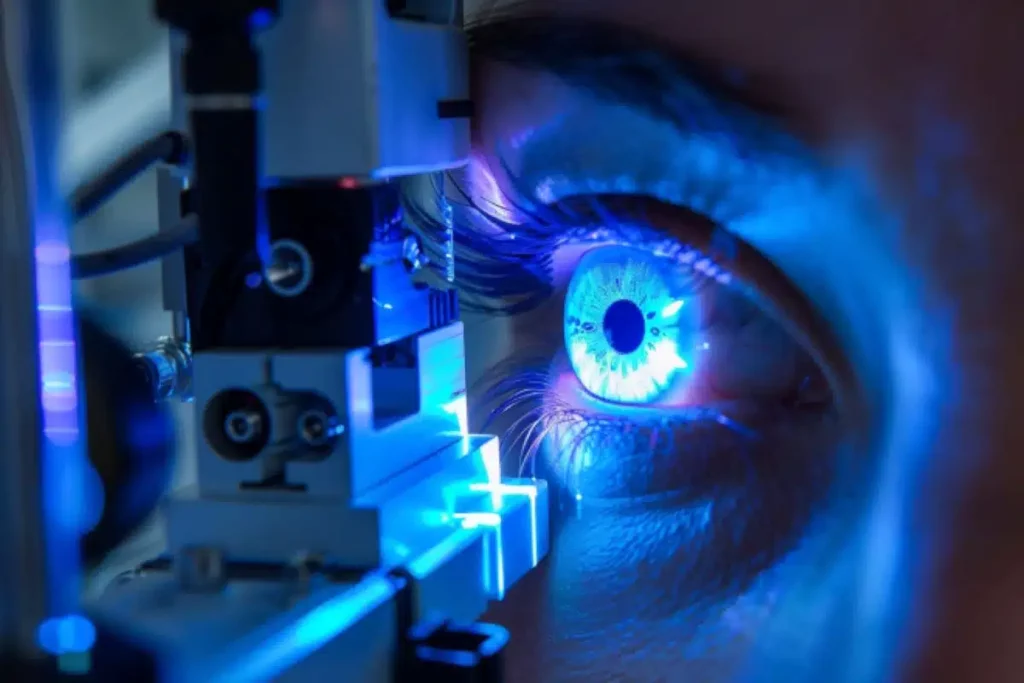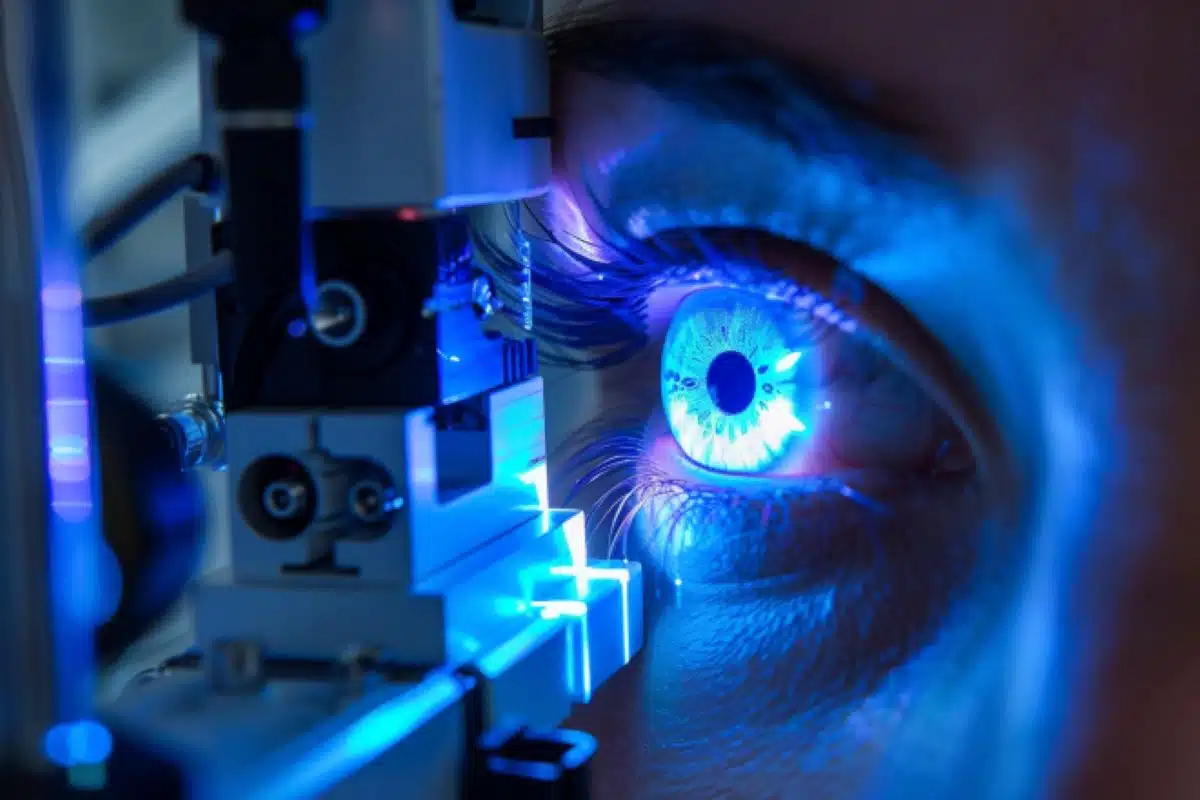Introduction
Robot-assisted radiotherapy represents a significant leap forward in the treatment of eye diseases. Published in The Lancet, a pioneering trial underscores its potential by showing substantial reductions in the necessity for injections to manage conditions, potentially cutting global injection needs by up to 1.8 million annually. This breakthrough is particularly significant in the context of treating Wet Age-Related Macular Degeneration (AMD), a debilitating condition where abnormal blood vessel growth in the macula leads to vision loss. Current treatments for AMD often involve frequent injections directly into the eye to control fluid buildup, posing logistical challenges and substantial costs to healthcare systems worldwide.

The precision of robotic radiotherapy offers a promising solution. By delivering focused radiation with enhanced accuracy, this technology aims to stabilize and manage AMD more effectively than traditional methods. This approach not only minimizes the need for injections but also improves patient outcomes by reducing the frequency of treatments required to maintain vision health. Led by researchers like Professor Timothy Jackson from King’s College London and King’s College Hospital, this trial marks a pivotal advancement in ocular healthcare, potentially transforming how AMD and other eye diseases are managed globally.
Understanding Wet AMD
Wet Age-Related Macular Degeneration (AMD) is a progressive and debilitating eye disease characterized by the abnormal growth of fragile blood vessels beneath the retina’s macula, the region responsible for sharp, central vision. These vessels are prone to leaking blood and fluid into the surrounding tissues, leading to swelling and damage that can rapidly and profoundly impair vision. The condition often manifests initially with distortions in straight lines and eventually progresses to a loss of central vision, severely affecting tasks like reading, driving, and recognizing faces.
This form of AMD represents a significant public health challenge, particularly as global populations age. It not only diminishes the quality of life for millions worldwide but also places a substantial burden on healthcare systems due to the intensive and ongoing treatment required to manage its progression. Current therapies, including regular injections into the eye to inhibit vessel growth and reduce fluid accumulation, aim to stabilize vision and prevent further deterioration. However, the need for frequent injections poses challenges in terms of patient compliance, healthcare resources, and associated costs, highlighting the critical need for innovative approaches like robotic radiotherapy to optimize treatment outcomes and enhance patient care.
Current Challenges and Treatment Landscape
Globally, AMD affects an estimated 196 million people, highlighting its widespread impact on global public health. In the UK alone, more than 700,000 individuals grapple with this condition. Current treatment protocols predominantly rely on frequent injections directly into the eye, aimed at reducing fluid buildup in the macula and preserving vision. While these injections initially enhance visual acuity, they necessitate ongoing therapy to manage the progressive nature of AMD. This treatment regimen imposes substantial physical, emotional, and financial burdens on patients, with each injection costing between £500 and £800. Consequently, these injections have become one of the most common procedures within the NHS, underscoring the urgent need for more sustainable and effective treatment alternatives like robotic radiotherapy.

Precision and Benefits of Robotic Radiotherapy
The new approach employs three beams of highly focused radiation directed precisely into the affected eye. Robotic radiotherapy offers superior targeting and efficacy compared to conventional methods, allowing for more precise treatment delivery. This precision enables patients to potentially require fewer injections to manage their condition, potentially reducing treatment frequency by approximately 25%. This innovative therapy not only enhances patient outcomes by effectively controlling disease progression but also alleviates the burden of frequent injections, improving the overall quality of life for individuals living with AMD and other similar eye conditions.
Cost-Effectiveness and NHS Impact
Led by Professor Timothy Jackson from King’s College London and King’s College Hospital, the study on robotic radiotherapy demonstrates substantial cost savings for the NHS. Each patient treated with this advanced therapy saves approximately £565 over the initial two-year period, primarily due to reduced dependency on injections. This financial benefit not only enhances patient outcomes by effectively managing AMD but also alleviates the logistical and financial burden on healthcare providers.
- Cost Savings: Approximately £565 per patient over two years
- Improved Outcomes: Effective disease management and reduced treatment frequency
- Logistical Benefits: Eases healthcare provider burden and enhances treatment sustainability
Future Implications and Ongoing Research
Dr. Helen Dakin from the University of Oxford emphasizes the economic viability of robotic radiotherapy, highlighting that the savings achieved from reduced injections outweigh the costs associated with implementing this advanced technology. Jointly funded by the National Institute for Health and Care Research (NIHR) and the Medical Research Council (MRC), the study enrolled 411 participants across 30 NHS hospitals, establishing it as a pivotal trial in the management of eye diseases.
- Economic Viability: Savings from reduced injections exceed technology implementation costs
- Funding Support: Joint funding from NIHR and MRC supports comprehensive research
- Participant Engagement: Involvement of 411 participants across 30 NHS hospitals
Conclusion
The introduction of robotic radiotherapy represents a groundbreaking advancement in the treatment landscape for eye diseases. This technology offers a highly precise and effective alternative to traditional therapies, particularly in managing complex conditions like Wet Age-Related Macular Degeneration (AMD). By delivering three beams of focused radiation directly to the affected eye, robotic radiotherapy improves treatment accuracy and efficacy compared to conventional methods. This enhanced precision not only ensures targeted therapy for AMD but also reduces the frequency of injections needed to stabilize the condition, potentially lowering treatment burdens for patients.
Beyond its clinical benefits, robotic radiotherapy holds significant promise for enhancing healthcare efficiency and sustainability worldwide. Led by pioneering researchers such as Professor Timothy Jackson from King’s College London and King’s College Hospital, studies have shown that implementing this technology can lead to substantial cost savings for healthcare systems. Each patient treated with robotic radiotherapy saves approximately £565 over the first two years due to reduced injection requirements, easing the financial strain on healthcare providers while improving long-term patient outcomes. Moreover, by optimizing treatment protocols and streamlining patient care, robotic radiotherapy supports the sustainable management of AMD and other eye diseases, ensuring that healthcare resources are used efficiently to meet the growing global demand for effective eye care solutions.
More on:
- https://www.micro2media.com/ai-powered-it-unleashing-new-horizons-in-technology-advancements/
- https://www.micro2media.com/ai-powered-it-unleashing-new-horizons-in-technology-advancements/
- https://www.ncbi.nlm.nih.gov/pmc/articles/PMC10150437/
- https://www.ingenia.org.uk/articles/how-robotics-can-improve-retinal-surgery/
